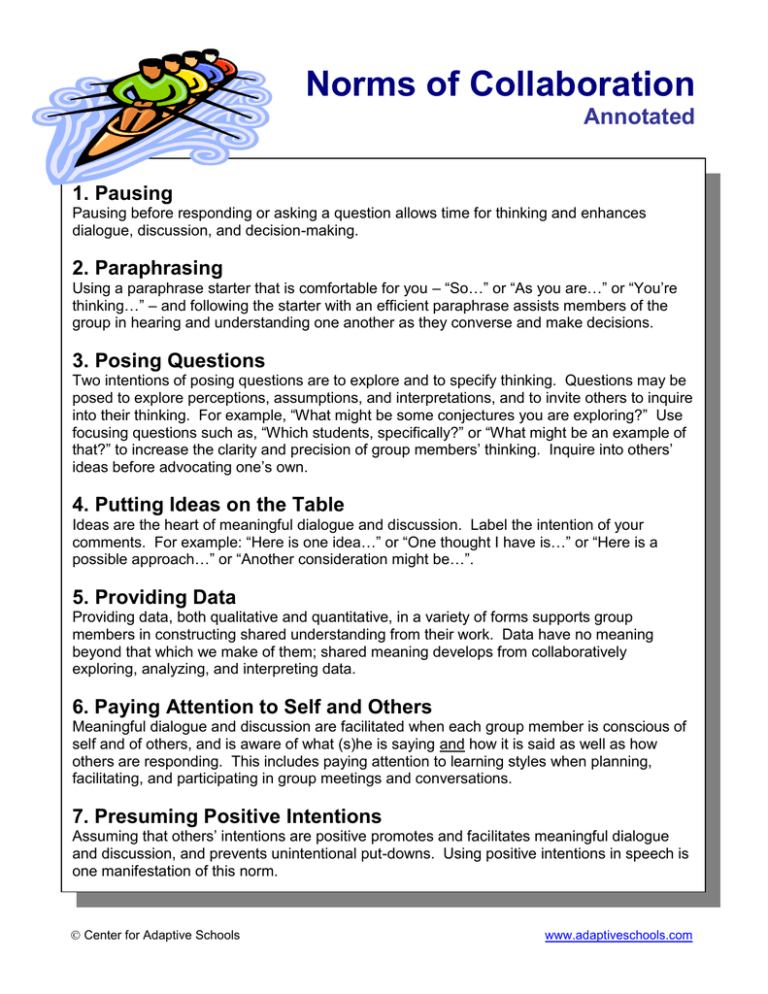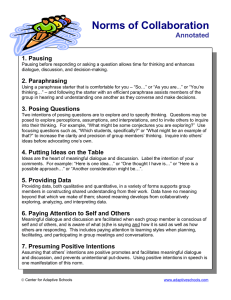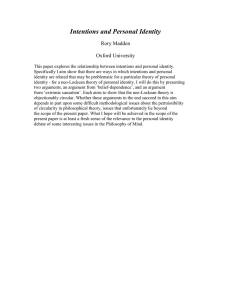BHRSD Norms
advertisement

Norms of Collaboration Annotated 1. Pausing Pausing before responding or asking a question allows time for thinking and enhances dialogue, discussion, and decision-making. 2. Paraphrasing Using a paraphrase starter that is comfortable for you – “So…” or “As you are…” or “You’re thinking…” – and following the starter with an efficient paraphrase assists members of the group in hearing and understanding one another as they converse and make decisions. 3. Posing Questions Two intentions of posing questions are to explore and to specify thinking. Questions may be posed to explore perceptions, assumptions, and interpretations, and to invite others to inquire into their thinking. For example, “What might be some conjectures you are exploring?” Use focusing questions such as, “Which students, specifically?” or “What might be an example of that?” to increase the clarity and precision of group members’ thinking. Inquire into others’ ideas before advocating one’s own. 4. Putting Ideas on the Table Ideas are the heart of meaningful dialogue and discussion. Label the intention of your comments. For example: “Here is one idea…” or “One thought I have is…” or “Here is a possible approach…” or “Another consideration might be…”. 5. Providing Data Providing data, both qualitative and quantitative, in a variety of forms supports group members in constructing shared understanding from their work. Data have no meaning beyond that which we make of them; shared meaning develops from collaboratively exploring, analyzing, and interpreting data. 6. Paying Attention to Self and Others Meaningful dialogue and discussion are facilitated when each group member is conscious of self and of others, and is aware of what (s)he is saying and how it is said as well as how others are responding. This includes paying attention to learning styles when planning, facilitating, and participating in group meetings and conversations. 7. Presuming Positive Intentions Assuming that others’ intentions are positive promotes and facilitates meaningful dialogue and discussion, and prevents unintentional put-downs. Using positive intentions in speech is one manifestation of this norm. Center for Adaptive Schools www.adaptiveschools.com Muddy Brook Peer to Peer Observation Norms Developed by MB Staff – Draft 9/2014 Observee (storyteller) speaks first. After observe speaks, start with a positive. Be Honest. Both sides acknowledge each other and do not have to agree. Focus on students. Focus on mini-lesson – purpose, clarity, discourse. Try not to perceive feedback as person – we are all learning. Be punctual.





